Marisol Vengas Physical Artwork From the Same Series as Curio Cards 27, 28, 29
Enjoy an NFT story: Our research team has had the opportunity and privilege to speak to Max Infeld, who is among the pioneers who saw the value in algorithmically generated artwork.
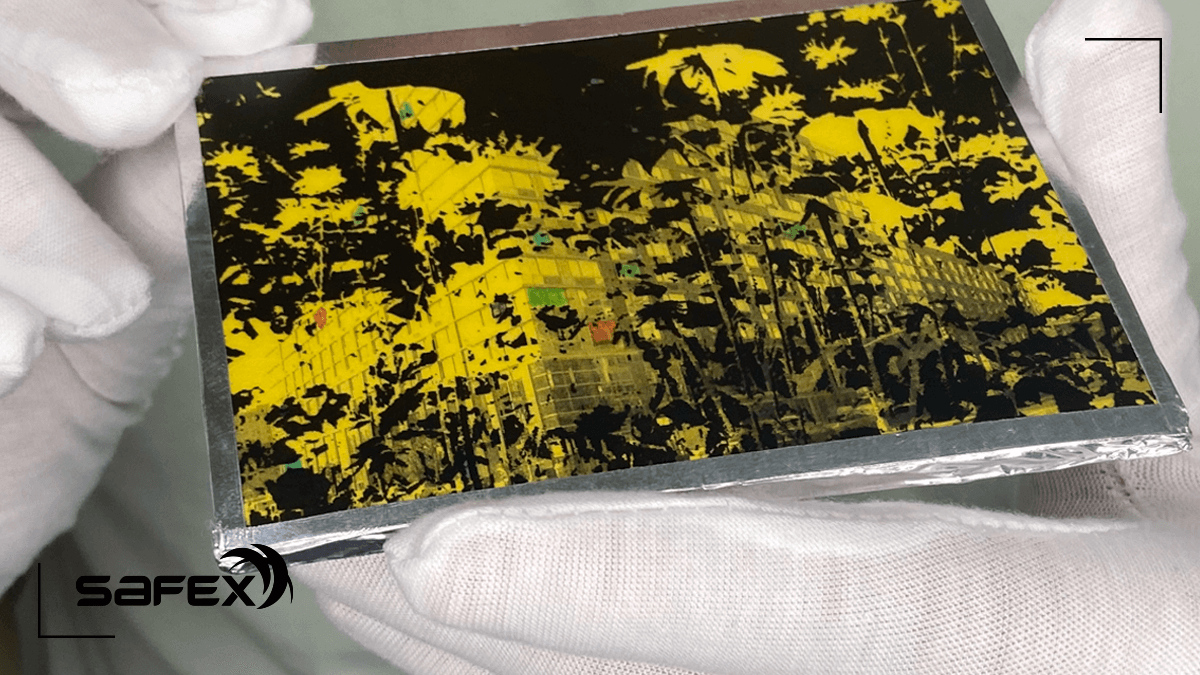
There is a huge wave of enthusiasm that is taking hold in the blockchain and cryptocurrency world surrounding NFTs. NFT means Non Fungible Token, in other words: unique. These are virtual stores of value that are able to be transferred like a coin, and in many cases they represent art work and in other cases they are items that can be used virtually.
With the proper rights assigned to the NFT, they can also act as digital certificates of ownership; however, that does not hold true in all cases.
This article will focus on the first Art NFTs to be minted on the Ethereum Blockchain, though keep in mind that NFTs also exist on the Bitcoin Blockchain such as the Rare Pepes using the Counter Party protocol which is an early stages system for embedding assets into the Bitcoin Network before the time of Ethereum.
Our research team has had the opportunity and privilege to speak to Max Infeld, who is among the pioneers who saw the value in algorithmically generated artwork and he took his trade skill in fine art and applied it to the Blockchain and Cryptocurrency space. The groundbreaking project he fostered and participated in is called Curio Cards and that is going to be the narrative that will illuminate at least one aspect of the NFT Art space.
Curio Cards
Curio Cards is a project that was started to issue NFT Art on the Ethereum Blockchain in 2017. Each Curio Card is a smart contract, and it was designed so that anyone can send some ETH to the virtual card's smart contract and in return the buyer would get a copy of the NFT Art.
"Basically there's a smart contract for each card, and each one of these are a vending machine you would send $1 worth of Ethereum and spend $1 worth of gas and get one of these cards." Said Max Infeld on how the cards were issue and how they came into existence. By now all of these NFT "vending machines" are locked and no further Curio Cards can be issued from the smart contracts.
Max also described that the whole purpose of the origins of the Curio Cards collection was to help artists. In person art distribution was not a strong form of reaching a larger audience, so he and a group of artists turned to Ethereum to issue these vending machine type distribution system and enable a global audience to access and support the artists. We would note that also, these is a pioneering method and the first of its kind to do such an act.
Below is a photo of all 30 Curio Cards images that are in the whole set of Curio Cards. Each card is limited in supply.
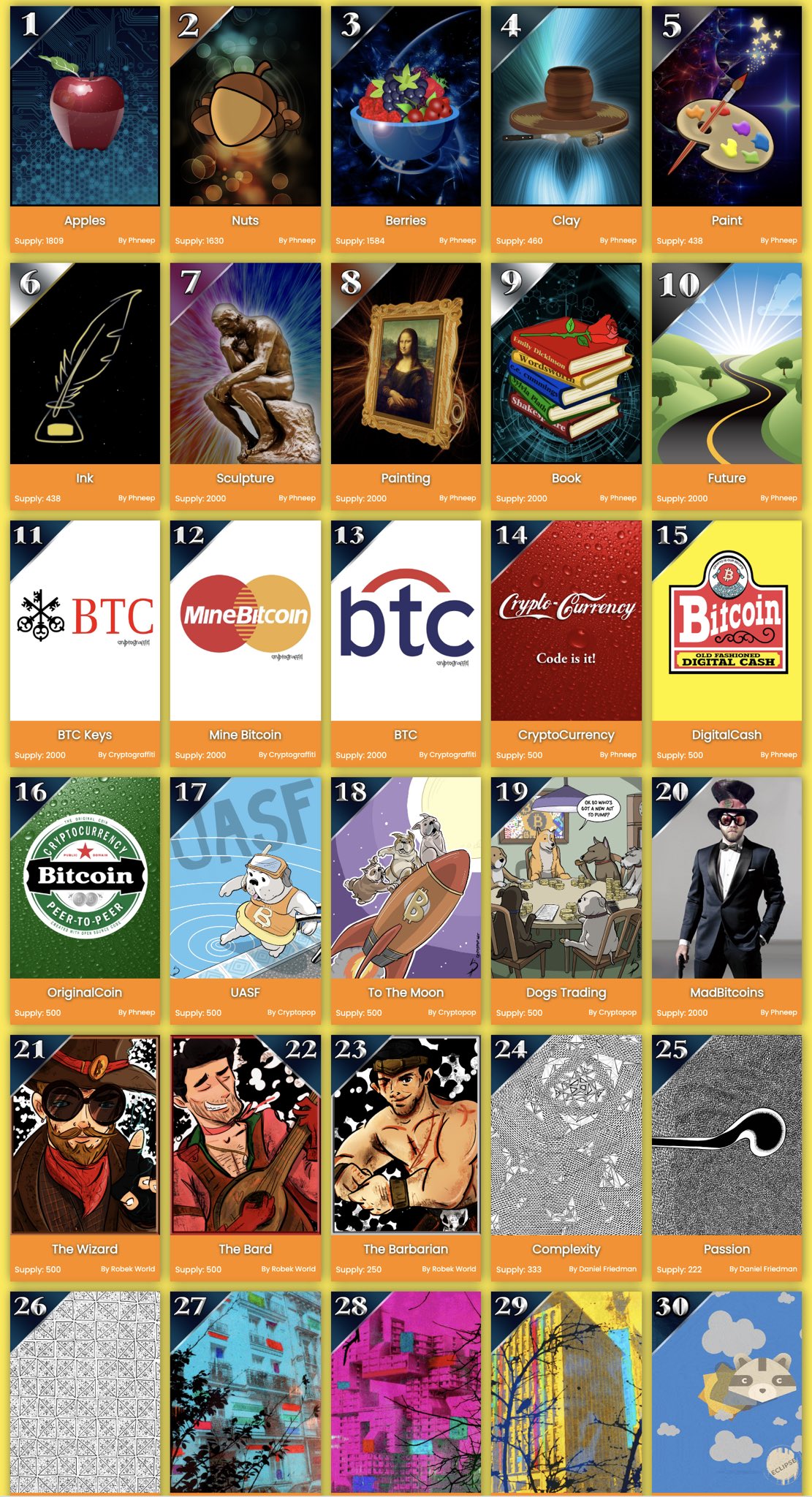
The pieces in question that we are focused on are numbered 27, 28, and 29. These are the Marisol Vengas Curio Cards. They are indeed algorithmically generated art and in these images are representations of a physical piece of art that Max was a part of creating and represented with the moniker Marisol Vengas. The only other Curio Cards with physical representations are 24, 25, and 26.
Marisol Vengas, The Artist who made Curio Cards 27, 28, & 29
The story of Marisol Vengas is that of a pioneering artist within the Curio Cards saga. And Marisol Vengas' story starts in 2007 and the focus of this artist has always been process, community, and digital frontier expanding work. Predating Bitcoin by 2 years, Marisol Vengas began exploring alternative forms of currency called Viral Monetary Units to create incentives and enable community growth. Living Art Projects. "The project only exists because of the audience." said Max, and that is what drew his attention to cryptocurrencies, the community aspect rather than the "investor, business" perspective.
The Marisol Vengas series which are represented in Curio Card 27, 28, 29 was started in 2007 is an algorithmic series, with a human terrestrial algorithm. Max would make events and workshops with friends and other people where the participants would color in the pieces, and Max would assemble them through a technique unique to him based on the compositions of the participants in the group.
Physical Artwork Became NFT Art as Curio Cards
We are currently describing the physical art work that were made that ended up being issued on the Curio Card collection.
The Marisol Vengas physical art works went through 6 series from 2007 through 2017. "The ones that Curio Cards are made out of, those are actually not the first series, they're series 6." Max told us. "When you are looking at those pieces, it's referencing a physical piece of art that referenced this performance social engagement, social interaction", Max explained further. "there's around 500 unique pieces" Max concluded.
Max also explained that since it's been over the course of 10 years many of those physical Marisol Vengas art works are lost, destroyed, or forgotten. Possibly only 10% of the 500 physical pieces remain, as they are in the hands of the people who would run into Marisol Vengas and purchase one of these memorable physical art works.
Christie's Auction House Will Sell a Full Curio Card Set
On October 1, 2021, Christie's Auction House is auctioning off a full set of the NFTs found as Curio Cards. This is ground breaking for the cryptocurrency industry and for all blockchain technology pioneers.
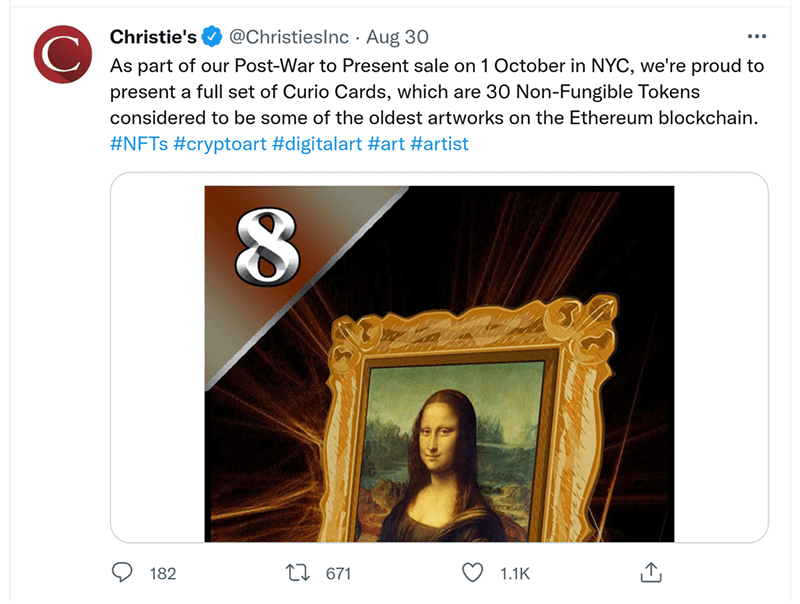
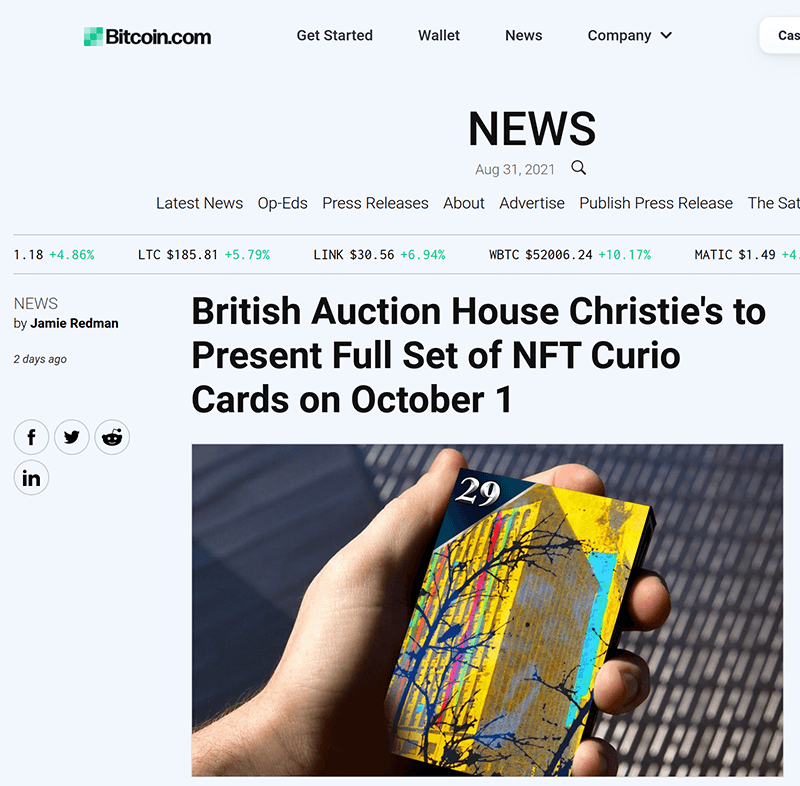
The Curio Cards have hallmark firsts in the world: First Art NFTs, First GIF NFT, First Avatars on the Blockchain, First Aliases on the Blockchain, First Fine Art on the Blockchain, First Physical Art represented on the Blockchain, First Collection NFTs/Cards on Blockchain, First NFTs to use IPFS
The series 6 Marisol Vengas set is composed of building images, and plants printed onto a foam board. The images are algorithmically generated. This series was crafted in 2016, and by 2017 the few pieces were used to be issued as part of the Curio Card set.
Tying in the Ethereum Blockchain, NFTs, Art work, and now Privacy, Security, and Freedom; since SafeX is a decentralized marketplace for goods and services, it is also capable of selling physical pieces of art work. Luckily we were able to meet Max and he had agreed to allow us to list for sale one the original Series 6 Marisol Vengas pieces of art.
SafeX Marketplace Listing Marisol Vengas Physical Artwork
Below is the listing in the SafeX Blockchain of number 4 from Series 6 of the Marisol Vengas art work cards. This is an iconic moment to be able to merge physical art work with a sale over the blockchain network that transcends the virtual world. Ethereum made the reach of the Marisol Vengas possible through the Curio Card, and now a version of it physically in reality is possible to be purchased.
Indeed there is a physical Marisol Vengas 27, 28, 29; however, this listing here is not those ones, but number 4, yet it is in the same series. So one day it could be possible that the physical ones that represent 27, 28, 29 may end up for sale or auction as well. Today we are presenting to you number 4.
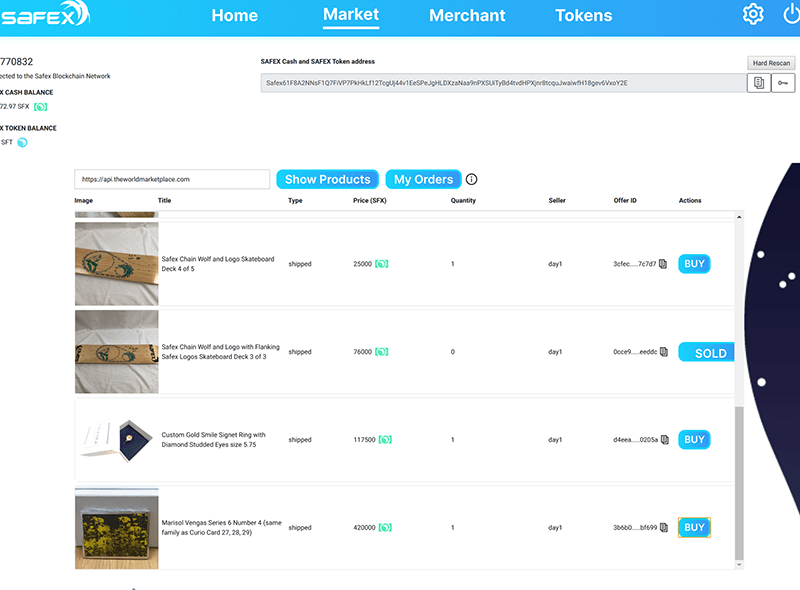
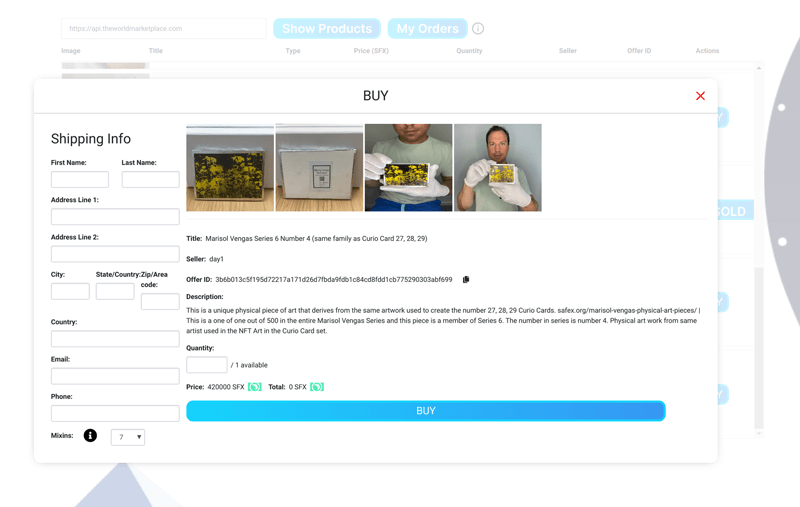
You can obtain this piece from the SafeX Market, a blockchain embedded marketplace for selling goods and services. It requires SafeX Cash, a proof of work mineable cryptocurrency and it is a privacy preserving currency. Here one can obtain the wallet, and SafeX Cash is trading actively on Bitrue.com and trade.xcalibra.com are the only two reliable places to obtain SafeX Cash today.
Once you have the SFX (SafeX Cash) on your wallet, you will be able to make purchases on the Market tab in the wallet. 50% of the sale proceeds will be donated to the Safex Foundation.
A special thanks to maximusmaximus for curating this art into existence and for giving us the chance to share it with you!
If you have any questions at all about the process, or about the Marisol Vengas piece please get in touch with Daniel Dabek via twitter or e-mail or contact us on our support forum where the entire community of technology pioneers and ecommerce futurists reside!
Note: Safex Foundation is a registered 501(c)3 not for profit organization supporting practical examples of cryptocurrency and blockchain technology.
